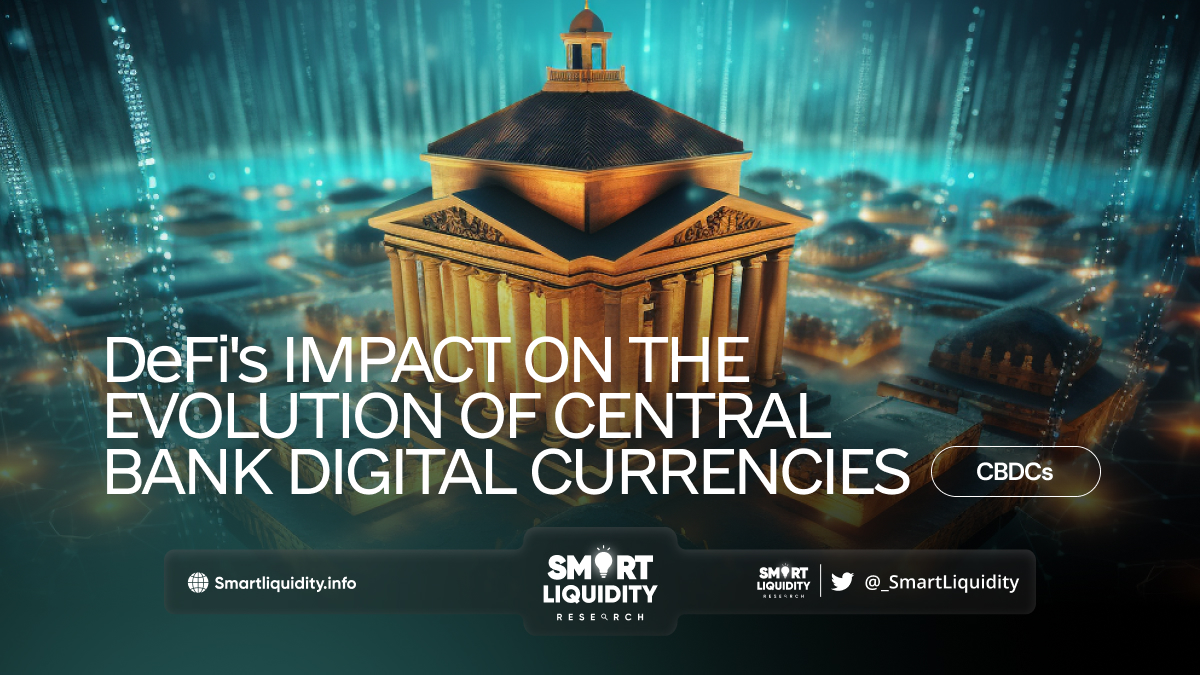DeFi and the Future of Central Bank Digital Currencies (CBDCs): A New Era in Finance


Finance undergoes a transformative shift with Decentralized Finance (DeFi) and Central Bank Digital Currencies (CBDCs). Despite their differences, these innovations converge to reshape the financial future, revolutionizing traditions and addressing issues like inclusion and regulations.
DeFi: The Decentralized Finance Revolution
DeFi, short for Decentralized Finance, has emerged as a powerful force within the blockchain and cryptocurrency space. It leverages blockchain technology to create an open and permissionless financial ecosystem that eliminates intermediaries, enhances transparency, and increases accessibility. DeFi projects offer a wide array of services, from lending and borrowing to decentralized exchanges, yield farming, and asset management.
The key strengths of DeFi include:
🌐 Permissionless Access: Anyone with an internet connection can access DeFi services, regardless of their location or financial status.
🔎 Transparency: Transactions and smart contracts are recorded on public blockchains, providing unparalleled transparency and accountability.
💡 Innovation: DeFi is a hotbed for innovation, leading to the creation of new financial products and services that were previously unimaginable.
🛡 Non-Custodial: Users retain control of their funds, reducing the risk of hacks and fraud associated with centralized exchanges.
Central Bank Digital Currencies (CBDCs) and the Future of Money
CBDCs represent the digitization of national fiat currencies, issued and regulated by central banks. They are gaining momentum globally as central banks aim to modernize the financial system and stay competitive in a digital economy. CBDCs aim to provide a secure, efficient, and cost-effective form of digital currency while maintaining control over the monetary policy.
A number of smaller countries have introduced their own central bank digital currencies, while several more populous nations are gearing up to join a distinct cryptocurrency trend.


The key attributes of CBDCs include:
🏛️ Government-backed: CBDCs are issued and regulated by central banks, ensuring stability and trust.
⚖️ Legal Tender: They are recognized as legal tender within the issuing country, making them widely accepted.
🌐 Digital Innovation: CBDCs harness the power of blockchain technology to provide secure and efficient digital transactions.
💸 Financial Inclusion: CBDCs can promote financial inclusion by providing access to the unbanked and underbanked populations.
DeFi and CBDCs: A New Era in Financial Inclusion
One of the most exciting aspects of the DeFi-CBDC convergence is the potential to bring financial services to underserved and unbanked populations. DeFi’s open and inclusive nature, combined with CBDCs’ government backing, can offer a powerful solution to the global financial inclusion challenge. By facilitating direct access to the financial system, these innovations can empower individuals and businesses worldwide, reducing the reliance on costly and inefficient traditional banking services.
Regulatory Challenges and Opportunities in the DeFi-CBDC Convergence
As DeFi and CBDCs merge, regulators face both challenges and opportunities. The borderless and decentralized nature of DeFi platforms can make traditional regulatory approaches challenging. However, regulatory oversight is essential to protect consumers, prevent fraud, and ensure the stability of the financial system.
Regulators have the opportunity to embrace technological advancements and create a regulatory framework that fosters innovation while safeguarding the interests of all stakeholders. Striking the right balance is crucial to harness the potential of DeFi and CBDCs while mitigating risks.
The convergence of DeFi and CBDCs poses a number of regulatory challenges. One challenge is how to regulate DeFi applications without stifling innovation. Another challenge is how to ensure that CBDCs are used in a way that is safe and sound.
However, the convergence of DeFi and CBDCs also presents a number of regulatory opportunities. For example, regulators can use DeFi to develop new financial products and services that are more tailored to the needs of consumers and businesses. Regulators can also use CBDCs to implement new monetary policy tools and to address the challenges posed by cryptocurrencies.
The Potential Impact of DeFi and CBDCs on the Financial Industry
The combined impact of DeFi and CBDCs on the financial industry is nothing short of revolutionary. These innovations have the potential to reshape the financial landscape in several ways:
🏦 Reduced Intermediation: Traditional financial intermediaries may face disruption as DeFi platforms offer direct peer-to-peer financial services, reducing the need for banks and brokers.
💵 Increased Financial Inclusion: CBDCs, when integrated with DeFi platforms, can extend financial services to the unbanked and underbanked populations, promoting economic growth and inclusion.
💰 Efficiency Gains: Blockchain technology can enhance the efficiency of transactions and reduce costs across the financial industry.
💱 Globalization of Finance: DeFi and CBDCs can break down geographical barriers, allowing users to access financial services and assets worldwide.
🚀 Innovation: The collaboration between DeFi and CBDCs can lead to the creation of new financial instruments, smart contracts, and decentralized applications, fueling innovation.
Conclusion
The convergence of DeFi and CBDCs represents a pivotal moment in the history of finance. These two forces are not merely shaping the future; they are co-creating it. By embracing innovation, enabling financial inclusion, and addressing regulatory challenges, the financial industry can evolve into a more accessible, efficient, and inclusive ecosystem, unlocking opportunities for individuals and businesses worldwide. It’s a new era in finance, and the possibilities are limitless.




